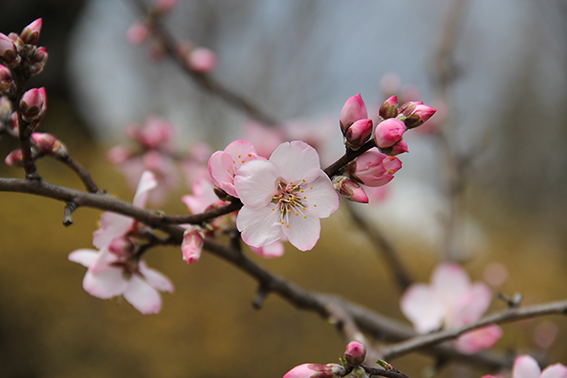In a rare phenomenon in the middle of winter, almond trees of Taft in Yazd Province are blossoming.
“Climate change and an early warm spell are among the reasons of this phenomenon,” IRNA quoted an official at the Taft plant protection institute of the agriculture jihad ministry, as saying. Meanwhile, consecutive droughts have also weakened the trees, he added.
He said the planted area of crops in the province is 18,000 hectares of which 6200 hectares covers almond. Annually one ton almond is harvested per hectare of cultivated area. More than 90% of the provincial almond crop is produced in Taft county. Taft is located 20 km southwest of Yazd.
Mild winters and warm springs are known to cause plants to bloom. Plants have various proteins that sense relative lengths of dark and light periods during a day (it is actually the dark period they are sensing; examples of plants’ light-sensing proteins are phytochrome and cryptochrome). In addition to sensing light, plants can also sense ambient temperature, and, in fact, many plants require a cold period in order to flower.
Shifts in Cycle
Once night lengths are short enough, flowering in the early spring is then triggered in most of the spring bloomers via ambient temperature. One hot day is usually not enough to fool plants, but many warm days, as experienced this year, can do the trick. The hypothetical protein that signals plants to bloom once the ideal conditions have arrived has long been called “florigen”.
Climate change is affecting a diversity of species in a variety of ways. In particular, climate warming is causing shifts in the timing of life history events for many species. Insect larvae are maturing into adults sooner, some bird species are laying eggs earlier in the season, and many plants are seeing early blooms.
In addition to advancing many phenological events, climate warming is altering the distribution of both plant and animal species. For example, tree lines are gradually increasing in elevation, and butterfly ranges are shifting northward.


